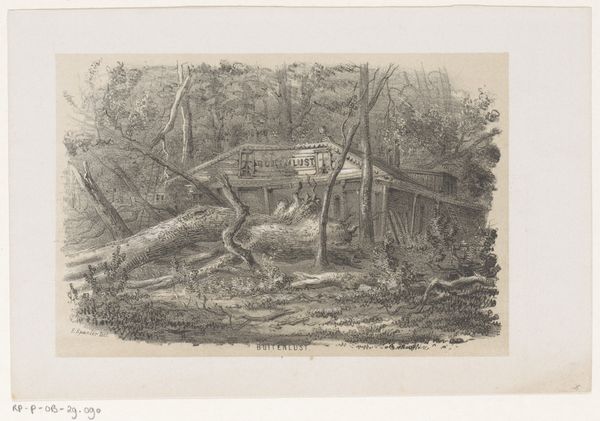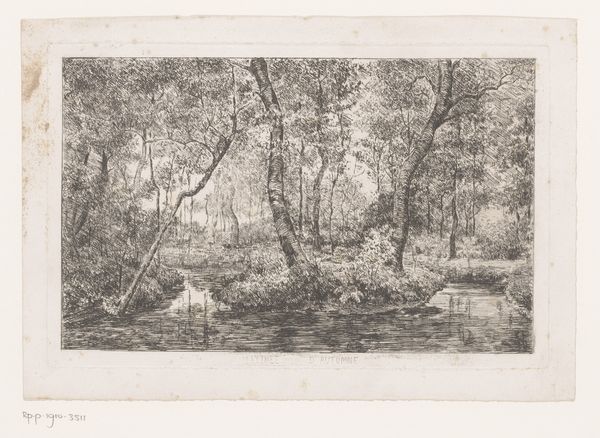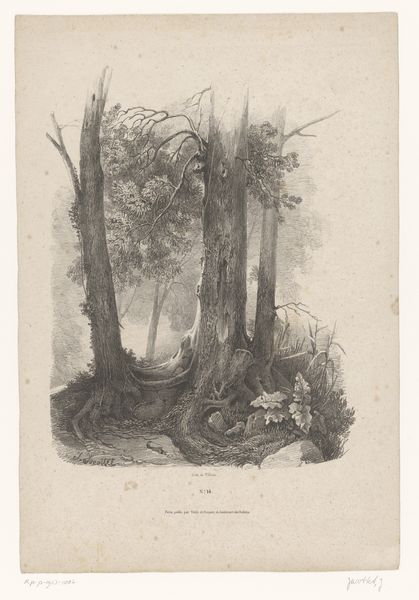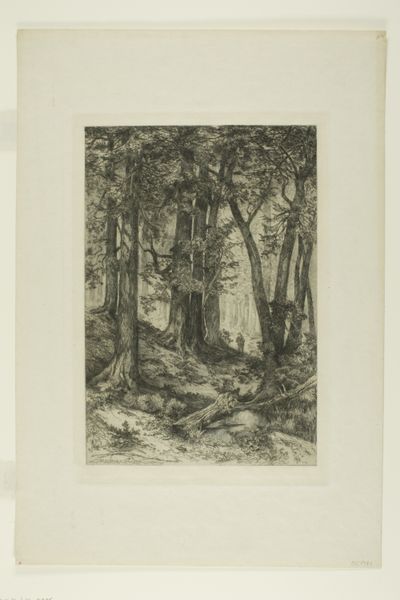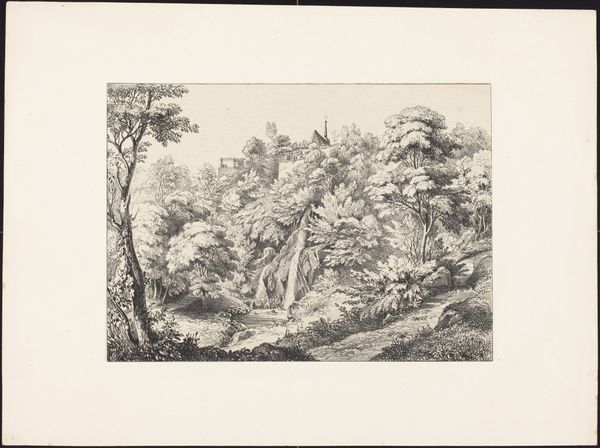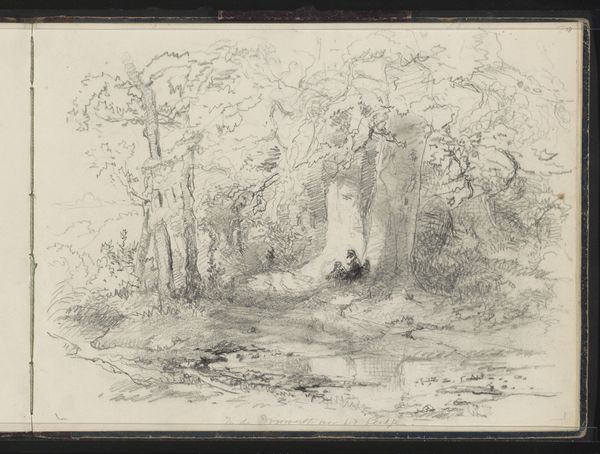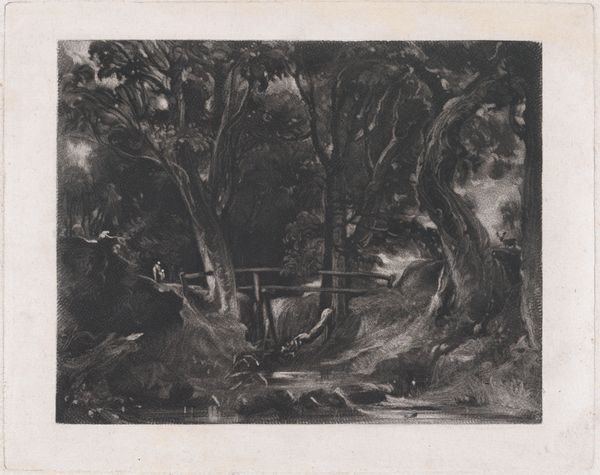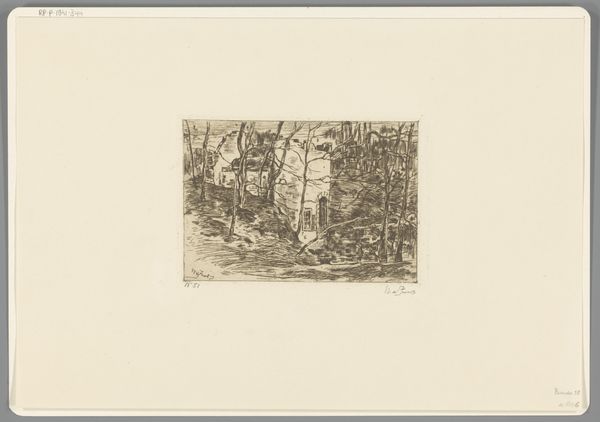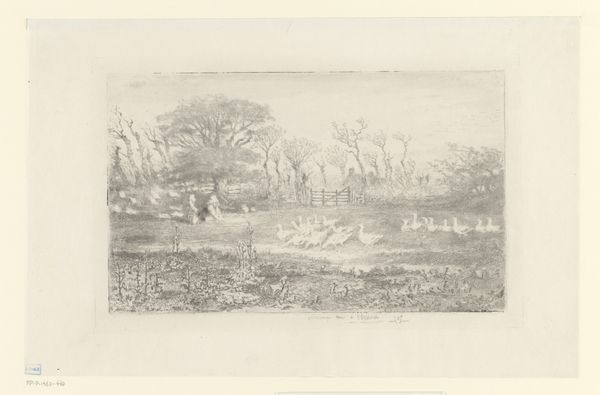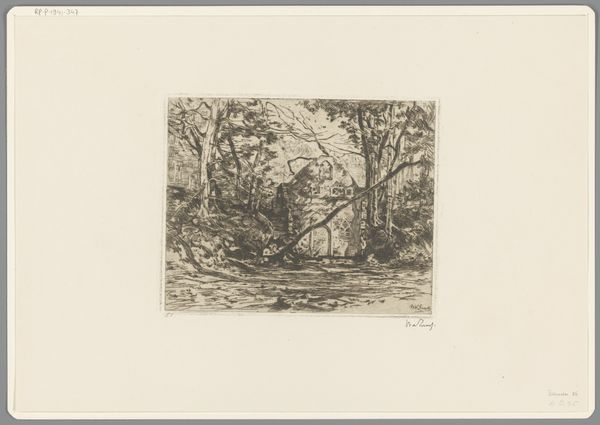
Omgewaaide bomen aan de Jacobalaan, na de storm van 28 mei 1860 1860
0:00
0:00
Dimensions: height 165 mm, width 245 mm
Copyright: Rijks Museum: Open Domain
Curator: This drawing, titled "Omgewaaide bomen aan de Jacobalaan, na de storm van 28 mei 1860", or "Fallen Trees on the Jacobalaan, after the storm of May 28, 1860," was created by Hendrik Wilhelmus Last in the very year it depicts, and now resides here at the Rijksmuseum. Editor: My immediate impression is of… melancholy, surprisingly serene melancholy, despite the devastation it portrays. All those uprooted trees, yet rendered with such delicate pencil work, it's almost like observing a theatrical stage after a great tragedy. Curator: Precisely! The artist's decision to render this scene in pencil drawing highlights an intimacy with nature's raw power. Storms in art often serve as symbols for political or social upheaval, or a more internal emotional tempest, certainly. It mirrors the romanticism popular at the time, connecting nature and human feelings. Editor: But let’s think about the physicality of it, the overturned root systems like unearthed secrets, the snapped trunks exposing the material realities of the wood itself, no longer serving their upright purpose. Consider also Last’s act of depicting this. How many hours labor went into capturing the chaos? Pencil may seem modest, but its a tool, it demands the artist's investment of time and physical energy. Curator: Indeed, the broken trees along Jacobalaan could be viewed as a visual representation of human vulnerability in the face of unstoppable forces. These natural events were seen as opportunities for divine messages to manifest. I see this almost like an exploration of psychological weight within romanticism. Editor: Or simply, the wood of fallen trees suddenly represents a changed relationship to utility. Now a discarded material to be cleared and considered only as so much physical weight and wasted substance. Fallen matter. Perhaps some of these downed trees were salvaged for fuel or for building, a forced negotiation with the material realities changed irrevocably by one night's weather. Curator: And in seeing this moment captured, doesn't that suggest an acceptance, too, of the cycles of nature? Not just destruction but perhaps a renewal in the chaos, even? Editor: It invites that consideration for sure, and to dwell a moment on how raw materials constantly undergo transformations that reflect changing relationships to human necessity and changing material conditions, which are revealed even in landscape drawings like these. Curator: I am compelled by the layered readings possible here, from its place within Romanticism, and to its powerful symbolic nature regarding loss. Editor: Absolutely. The confluence of natural event and material representation certainly has created enduring food for thought.
Comments
No comments
Be the first to comment and join the conversation on the ultimate creative platform.
